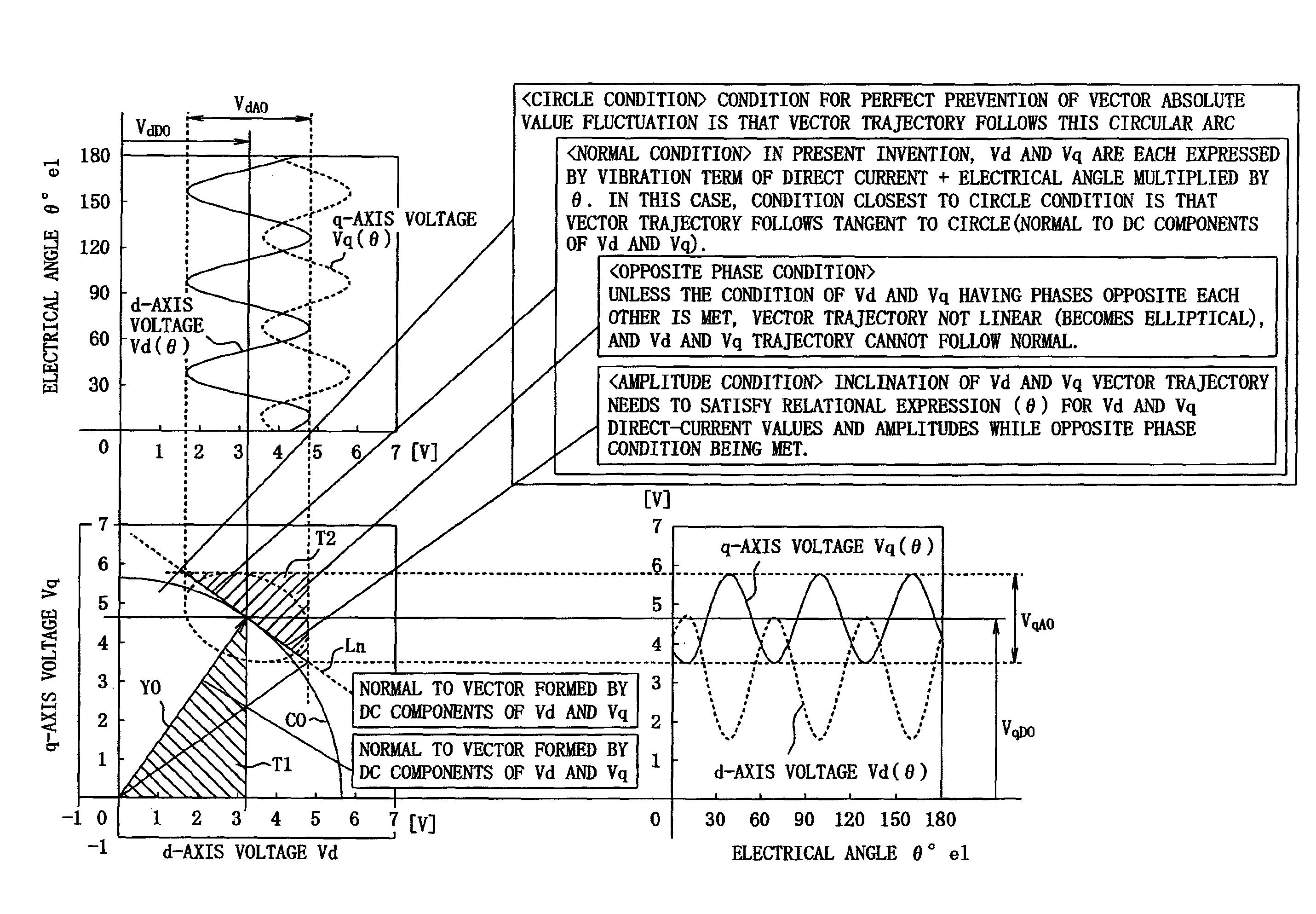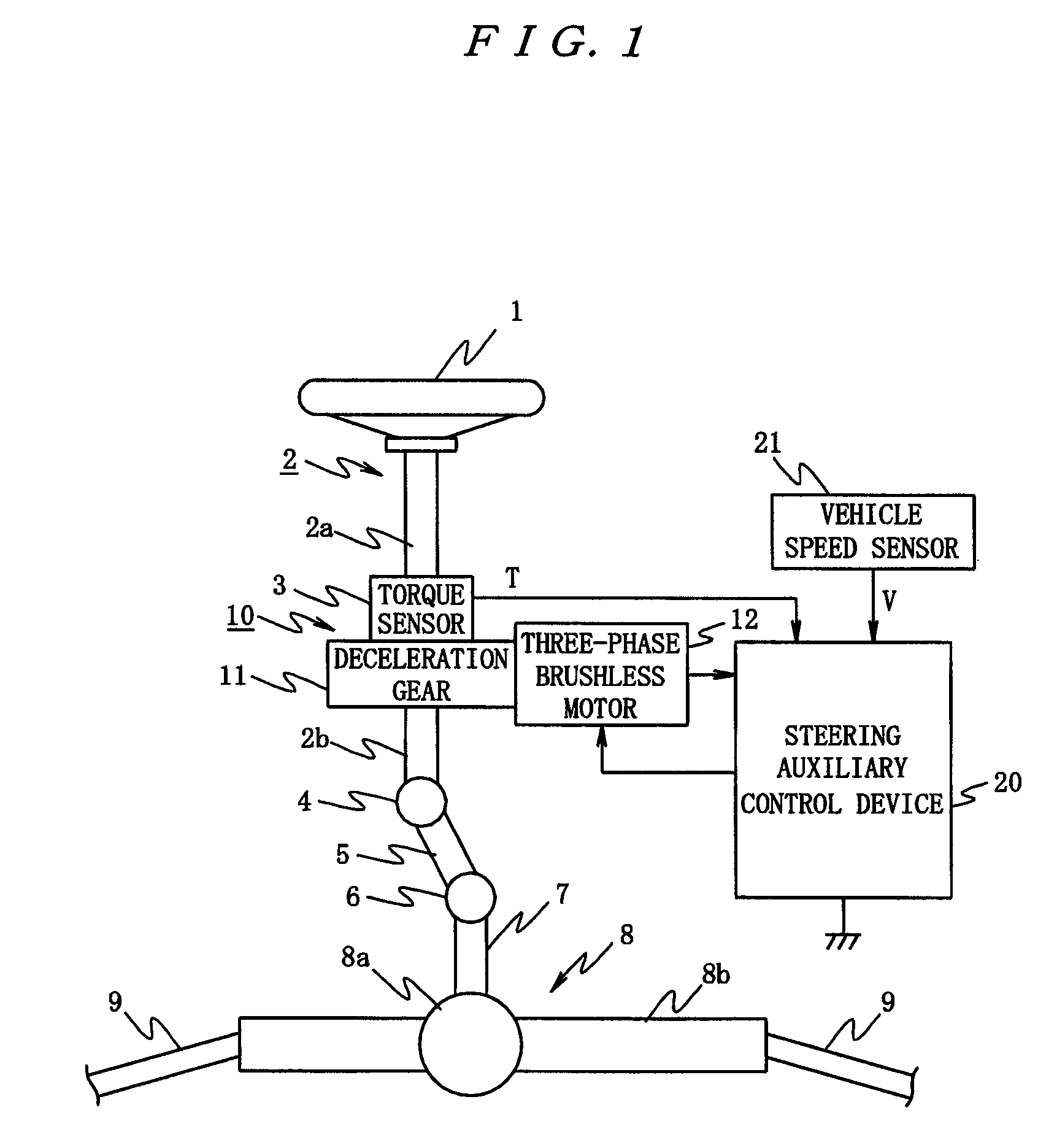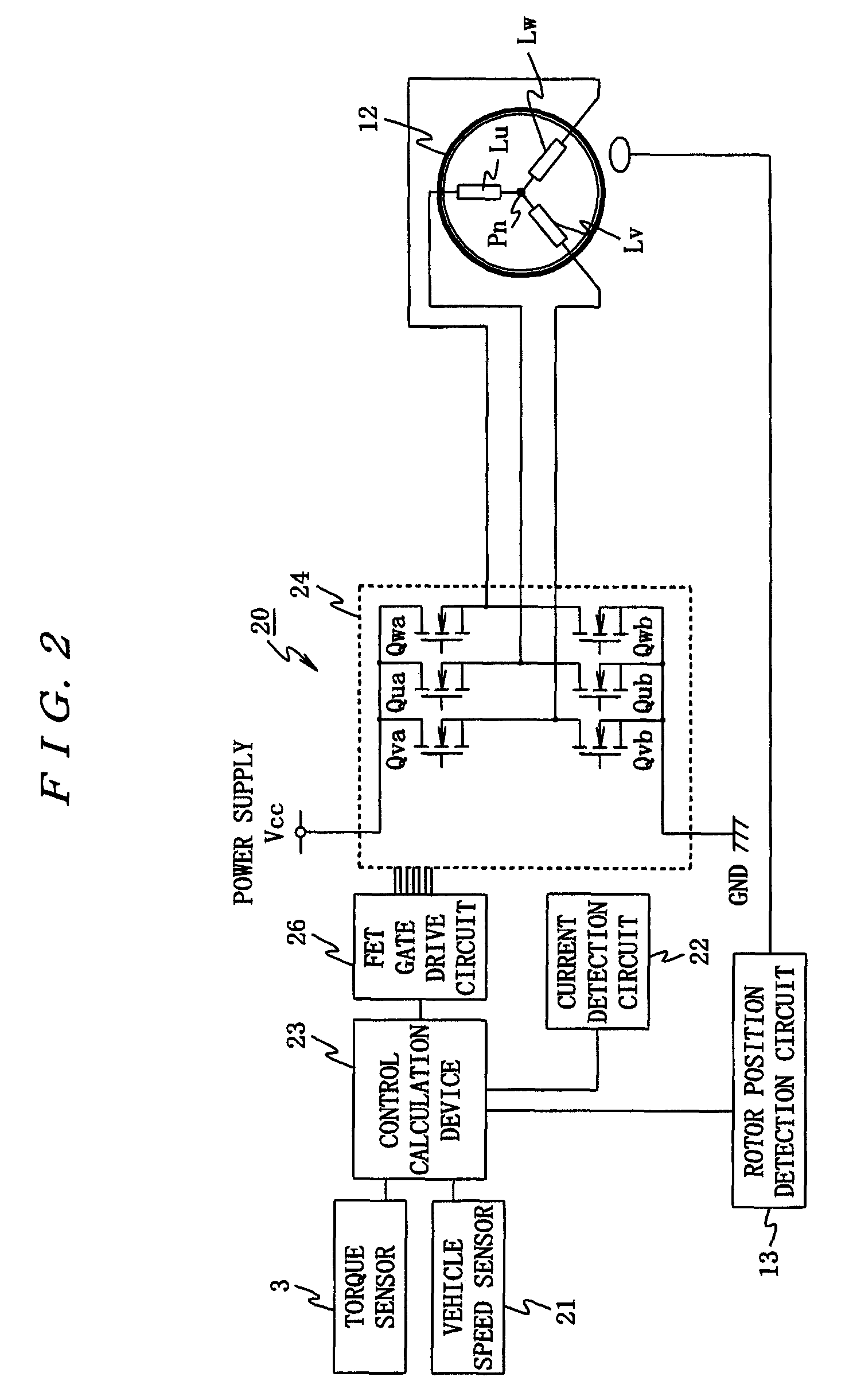Motor control device and motor-driven power steering system using the same
a technology of motor control device and power steering system, which is applied in the direction of electric generator control, dynamo-electric converter control, dynamo-electric gear control, etc., can solve the problems of hindering the enhancement of motor output and ineffective use of voltage, so as to achieve effective use of power supply voltage, suppress torque fluctuation, and effect of using power supply
- Summary
- Abstract
- Description
- Claims
- Application Information
AI Technical Summary
Benefits of technology
Problems solved by technology
Method used
Image
Examples
first embodiment
[0102]FIG. 1 is an overall configuration of a first embodiment where the present invention is employed in a motor-driven power steering system, and in the Figure, reference numeral 1 denotes a steering wheel, and a steering force exerted by a driver to the steering wheel 1 is conveyed to a steering shaft 2 having an input shaft 2a and an output shaft 2b. One end of the input shaft 2a of this steering shaft 2 is connected to the steering wheel 1, and the other end is connected via a steering torque sensor 3 to one end of the output shaft 2b as steering torque detection means.
[0103]The steering force conveyed to the output shaft 2b is conveyed via a universal joint 4 to a lower shaft 5, and is further conveyed via a universal joint 6 to a pinion shaft 7. The steering force conveyed to this pinion shaft 7 is conveyed via a steering gear 8 to a tie rod 9 to turn steered wheels not shown. Here, the steering gear 8 is configured to have a rack-and-pinion structure having a pinion 8a conne...
second embodiment
[0168]Next, the present invention will be described with reference to FIGS. 24 to 27.
[0169]In this second embodiment, to the steering auxiliary control device 20 in the first embodiment, a steering torque T detected by the steering torque sensor 3 and a vehicle speed V detected by the vehicle speed sensor 21 are input, and also an angle detection signal θm detected by the motor position detection circuit 13 is input, and based on this angle detection signal θm, an electrical angle θe output from an electrical angle calculation unit 50 that calculates an electrical angle θe is input, and furthermore, motor drive current detection values Iadet and Icdet output from a motor current detection unit 57 that detects, in the later-described inverter circuit 56, motor drive currents Ia and Ic supplied to phase coils La and Lc in the three-phase brushless motor 12, and Ibdet estimated from the motor drive currents Ia and Ic are input.
[0170]This steering auxiliary control device 20, as shown i...
third embodiment
[0233]Next, the present invention will be described with reference to FIG. 28.
[0234]This third embodiment reduces an back electromotive voltage compensation error where the back electromotive voltage compensation error due to back electromotive voltage distortion significantly increases at a high rotation speed and a high current, in addition to the generation of current command values in conformity to distorted back electromotive voltages to provide a constant torque in the aforementioned second embodiment.
[0235]In other words, in the third embodiment, a control device 20, as shown in FIG. 28, includes an angular velocity calculation unit 80, a current command value generation unit 81, a d-q axis current command value calculation unit 82, a two-phase / three-phase conversion unit 83, a compensation back electromotive voltage calculation unit 84, a current control unit 85, an adder unit 86, a PWM control unit 87, and an inverter circuit 88.
[0236]The angular velocity calculation unit 8...
PUM
 Login to View More
Login to View More Abstract
Description
Claims
Application Information
 Login to View More
Login to View More - R&D
- Intellectual Property
- Life Sciences
- Materials
- Tech Scout
- Unparalleled Data Quality
- Higher Quality Content
- 60% Fewer Hallucinations
Browse by: Latest US Patents, China's latest patents, Technical Efficacy Thesaurus, Application Domain, Technology Topic, Popular Technical Reports.
© 2025 PatSnap. All rights reserved.Legal|Privacy policy|Modern Slavery Act Transparency Statement|Sitemap|About US| Contact US: help@patsnap.com



